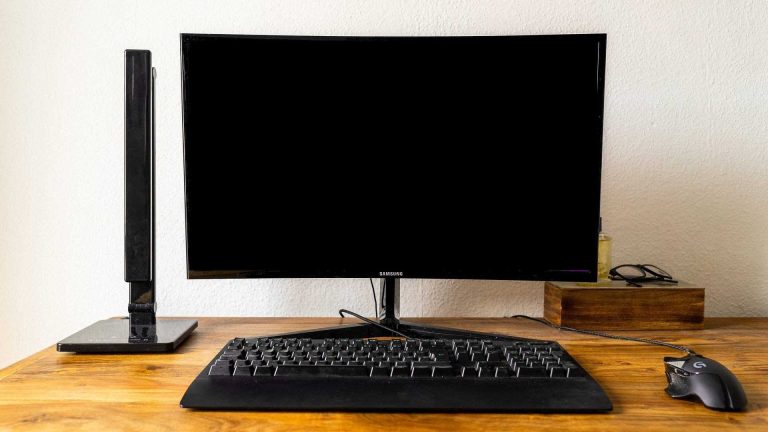The best size for dual monitors really depends on your workspace and what you use them for, but generally, 24 to 27 inches is the sweet spot for most users. Larger screens can boost productivity and provide a more immersive experience, while smaller ones are more space-efficient and budget-friendly.
For most people, dual monitors ranging from 24 to 27 inches offer a perfect balance between screen real estate and comfort, making multitasking smoother and less cramped. Choosing the right size also hinges on your desk space, your typical tasks, and how far you sit from the screens. Whether you’re working, gaming, or designing, finding the right monitor size can significantly enhance your overall experience. So, understanding your needs and space limitations is key to selecting the optimal size for your dual setup.
What is the Best Size for Dual Monitors
Choosing the right size for dual monitors can make a big difference in how comfortably you work or play. The best size depends on several factors, including your desk space, the kind of work you do, and personal preferences. Let’s dive into the details to help you decide what size suits you best.
Understanding Screen Size and Resolution
Screen size is measured diagonally from one corner to the opposite corner, usually in inches. Resolution refers to how detailed the display is, indicated in pixels like 1920×1080 or 2560×1440. Both aspects impact how much content you can see and how sharp it appears.
How Screen Size Affects Work Efficiency
Larger screens provide more space to view multiple windows simultaneously, reducing the need to switch between tabs. This can improve productivity, especially for tasks like video editing, graphic design, or data analysis. Smaller screens may be sufficient for basic tasks such as browsing and email.
Common Sizes for Dual Monitors
- 24 inches: Popular for general use, balanced size, fits most desks well.
- 27 inches: Offers more viewing area, excellent for multitasking and detailed work.
- 32 inches or larger: Suitable for specialized tasks, such as video editing or gaming, but requires ample desk space.
Matching Monitor Size and Resolution
Usually, larger screens come with higher resolutions. For example, a 24-inch monitor often has a 1920×1080 resolution, while a 27-inch might feature 2560×1440. Matching size and resolution ensures clear images without blurriness.
The Impact of Resolution on Monitor Size
Higher resolutions allow for more content to fit on the screen without appearing pixelated. For dual monitors, combining different resolutions can lead to uneven visual experiences. For consistency, choose monitors with similar resolutions when possible.
Optimal PPI (Pixels Per Inch) for Clear Display
A PPI between 90 and 110 offers sharp images and crisp text. Monitors that have higher PPI are clearer but may require more powerful hardware to drive the extra detail. When selecting dual monitors, balancing size and resolution is key for comfortable viewing.
Desk Space and Ergonomics Considerations
Size isn’t everything; your workspace plays a vital role. Larger screens need more room, and improper placement can cause neck or eye strain. Ensure your desk can accommodate the monitors comfortably and promote a healthy viewing posture.
Recommended Setup for Comfort
- Place monitors at eye level to avoid neck strain.
- Maintain a comfortable distance of about an arm’s length from the screen.
- Use adjustable stands or mounts to customize the height and angle.
Impact of Monitor Size on Eye Comfort
Too large a screen may cause you to move your head frequently, increasing fatigue. Conversely, small monitors might require squinting or leaning in closer. Finding the right size that fits your workspace and reduces strain is essential.
Types of Monitors Suitable for Dual Setup
Different monitor types can influence your choice of size. For instance, ultrawide monitors offer expansive screens in a single unit, while traditional monitors come in standard rectangular shapes. Your choice affects how you set up your workspace.
Ultrawide Monitors vs. Dual Monitors
- Ultrawide monitors provide a seamless experience with a wide field of view.
- Dual monitors offer flexibility, allowing you to position screens at different angles or sizes.
Advantages of Larger Monitors in a Dual Setup
- More screen real estate for multitasking.
- Enhanced immersion in activities like gaming or video editing.
Budget and Cost Considerations
The larger the monitor, typically, the higher the price. Balance your ideal screen size with your budget to find the best fit. Remember, investing in quality displays can pay off in long-term comfort and productivity.
Cost-Effective Options for Dual Monitors
- Consider 24-inch monitors for a budget-friendly dual setup.
- Mid-range 27-inch monitors offer a good balance of size and price.
- Look for deals or refurbished models to save money without sacrificing quality.
Additional Accessories to Enhance Dual Monitor Experience
- Adjustable monitor arms for flexible positioning.
- Anti-glare screen protectors for better visibility.
- Ergonomic stands to ensure proper posture.
Personal Preferences and Use Cases
Your specific needs influence the ideal monitor size. Writers, programmers, designers, gamers, and casual users each benefit from different setups. Consider how you will use the monitors to choose the best size.
For Work and Productivity
- 24 to 27 inches typically provide ample space without crowding the desk.
- Multiple smaller monitors can sometimes replace a larger single display.
For Gaming and Multimedia
- 27 inches or larger can enhance immersion.
- Ultrawide screens add cinematic quality to gaming sessions.
For Creative and Design Work
- High-resolution 27-inch monitors allow detailed editing.
- Multiple monitors facilitate multitasking between tools and reference materials.
The perfect size for dual monitors depends on your workspace, the tasks you handle, and your personal comfort. Generally, 24 and 27 inches strike a good balance for most users, offering enough space without overwhelming your desk. Always consider resolution, ergonomics, and budget when choosing the right monitors. With the correct setup, dual monitors can significantly improve your productivity and make your digital activities more enjoyable and comfortable.
What’s the best monitor size?
Frequently Asked Questions
How does the typical workspace influence the ideal monitor size for dual setups?
The available space on your desk significantly impacts the size of monitors you should choose. If you have a compact work area, smaller monitors, such as 24 inches, offer ample screen real estate without overcrowding. Conversely, larger desks can comfortably support 27-inch or 32-inch monitors, providing more immersive viewing experiences. Consider measuring your workspace and leaving enough room for movement and accessories to select the most suitable monitor sizes.
What considerations should I make for different types of tasks when choosing monitor sizes?
Your daily activities play a vital role in determining the best monitor sizes. For tasks that involve detailed design work or extensive multitasking, larger monitors like 27 or 32 inches help you view multiple windows or detailed images more comfortably. If your work involves basic tasks or frequent movement, smaller monitors around 24 inches may suffice. Matching monitor size to your task complexity ensures better productivity and comfort.
How does resolution affect my choice of dual monitor sizes?
Higher resolution displays, such as 1440p or 4K, can compensate for smaller screen sizes by offering sharp, clear images and more workspace. If you want larger screens but prefer high detail, consider 27-inch or bigger monitors with higher resolutions. This allows you to work comfortably without sacrificing image clarity, especially important for tasks like graphic design or video editing.
Should I consider the viewing distance when selecting monitor sizes?
Yes, the distance between your eyes and the monitors influences the optimal size. Monitors placed closer may feel overwhelming if they are too large, causing neck strain or difficulty focusing. Maintaining a viewing distance of about an arm’s length works well with 24-inch screens, while larger monitors (27-32 inches) can be comfortably viewed from a slightly greater distance. Adjusting size based on your typical viewing habits improves comfort and reduces eye fatigue.
What are the ergonomic benefits of choosing the right monitor size for dual displays?
Choosing monitors that fit your ergonomic needs helps maintain good posture and reduces strain. Smaller monitors may require frequent head and neck movements, while appropriately sized larger monitors enable you to keep your head centered and eye level. Properly sized displays also reduce the need to lean forward or stretch your neck, promoting comfort during long working hours and supporting overall health.
Final Thoughts
The best size for dual monitors depends on your needs and workspace. Typically, 24 to 27 inches offers a good balance between screen real estate and desk space. Larger screens can enhance productivity but may require more room.
Consider your tasks and setup when choosing monitor sizes. If you perform detailed work, larger monitors provide better clarity. For general use, standard sizes often suffice.
In conclusion, what is the best size for dual monitors varies individually. Matching your work style with monitor dimensions ensures comfort and efficiency.

With experience in IT support and consumer technology, I focus on step-by-step tutorials and troubleshooting tips. I enjoy making complex tech problems easy to solve.






